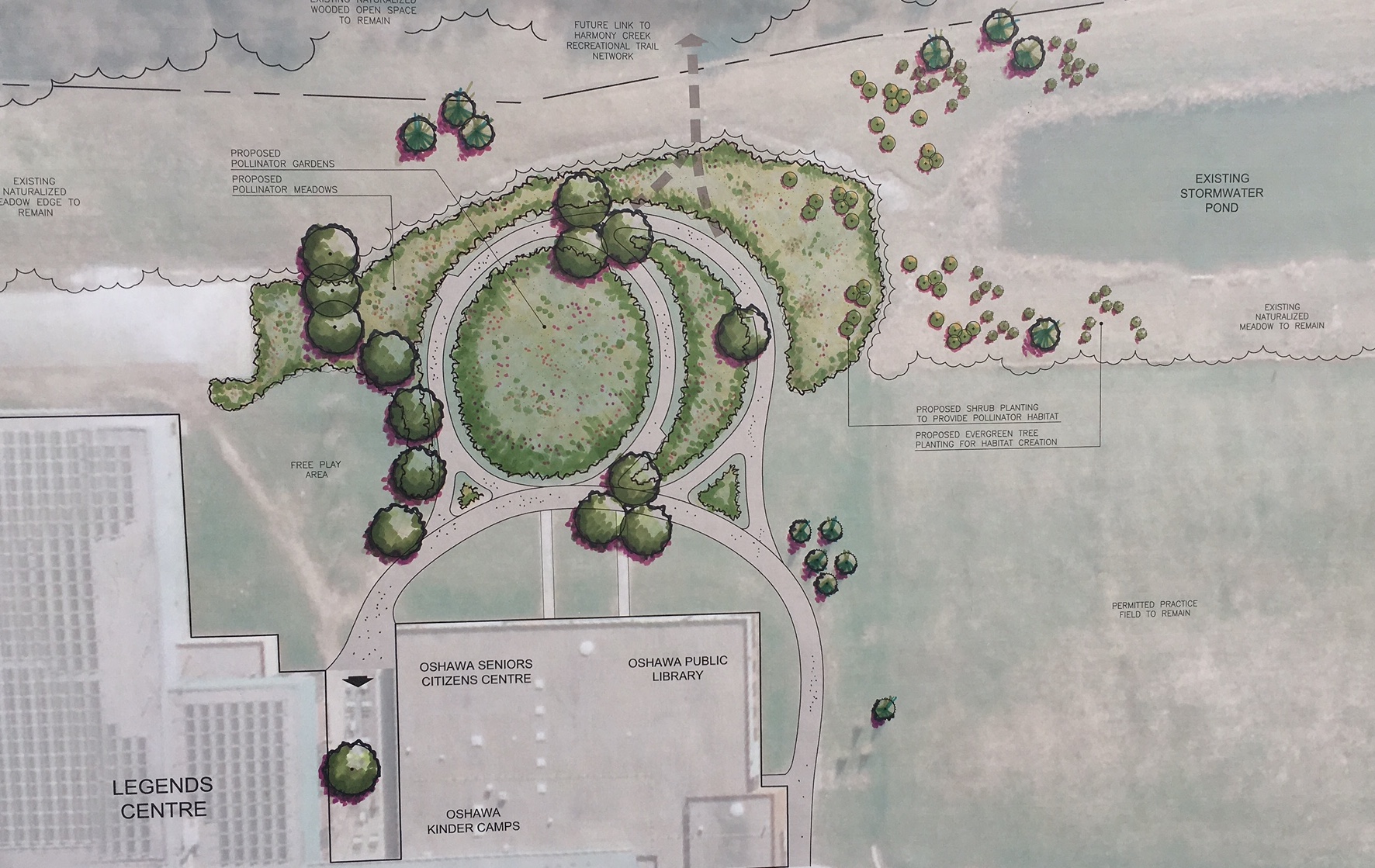Amid a wide range of activities celebrating the beginning of Fall I took the opportunity to visit the planting of the pollinator garden behind the Legends Centre Saturday Sep. 23 2017. The garden is an initiative by Parks and Rec., CN EcoConnexions, Tree Canada as well as the Community In Blooms program. The planting event was not so well attended but is of no less importance to the culture of Oshawa. This city needs to foster pollinators of the environment as well as pollinators of ideas. Both bear fruit, you dig?
As a member of the Culture Leadership Council (and the Culture Counts planning committee which gave rise to it), my main focus has been and continues to be the enablement of local voices. Culture rises from geography and place does matter. The environment is an important aspect of culture and the city's advocacy for natural heritage, its maintenance and fostering is to be congratulated.
The pollinator garden will be a mix of native and non-native plants but as the garden and meadows are there to encourage local species of birds, bats, bees and butterflies the emphasis will be on the indigenous.
The garden is an apt metaphor for fostering local culture. To grow the creative community in this area there needs to be a willingness by the City to provide the resources, a willingness by the public to focus on self-sustainability and most importantly by both public and private sectors the need to understand culture, like the garden, is not there to pay their bills, but to foster well-being for all; birds, bees, bats, butterflies and peoples of all backgrounds and cultures. Art makes life better period.
It will be a few years before we can fully enjoy these new gardens, enjoy the sight of a thriving natural community flitting and buzzing its way around the flowers but it will be worth it. We know that intuitively.
Now imagine what this city will look like in those same few years if we apply the same thinking to our creative community.
